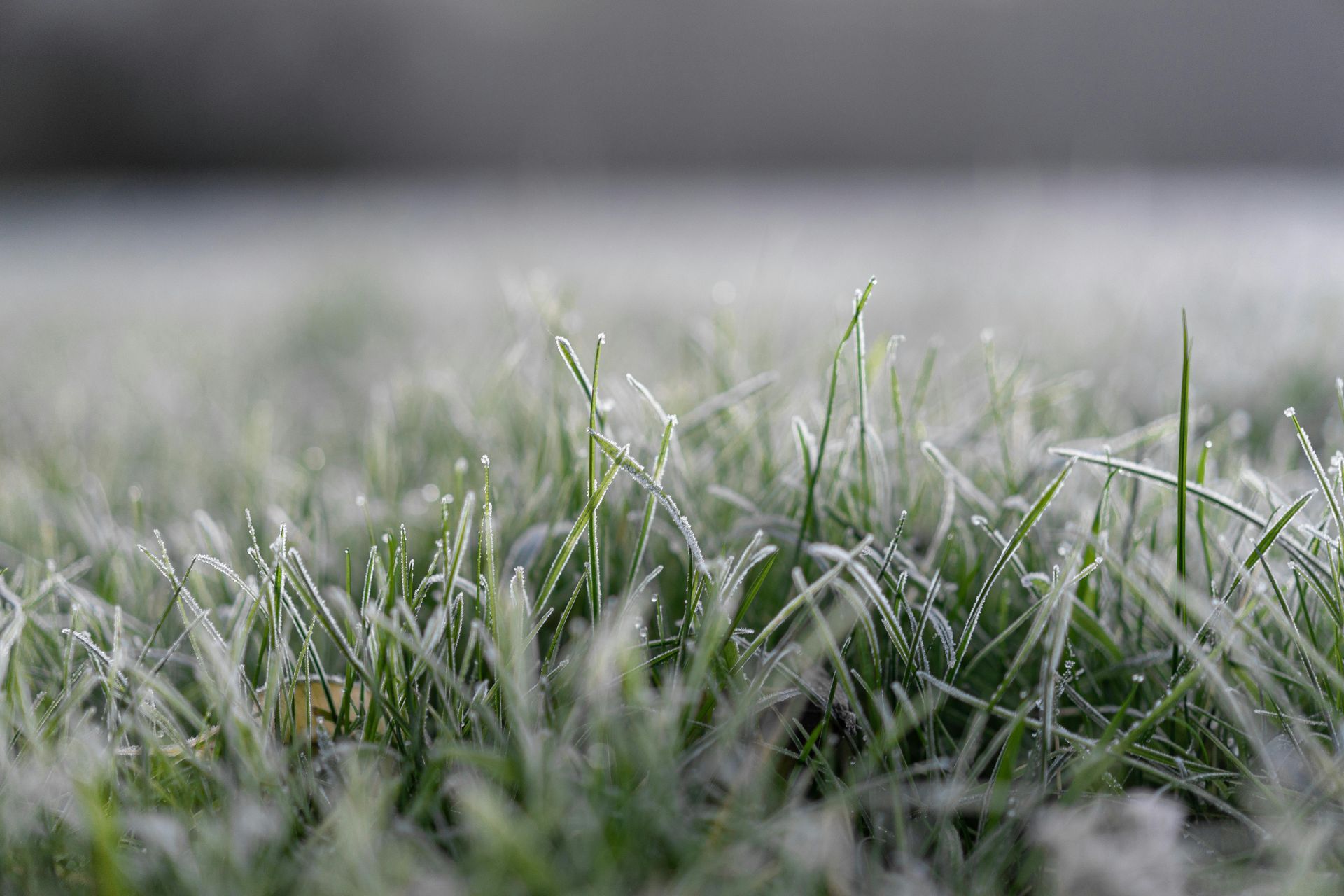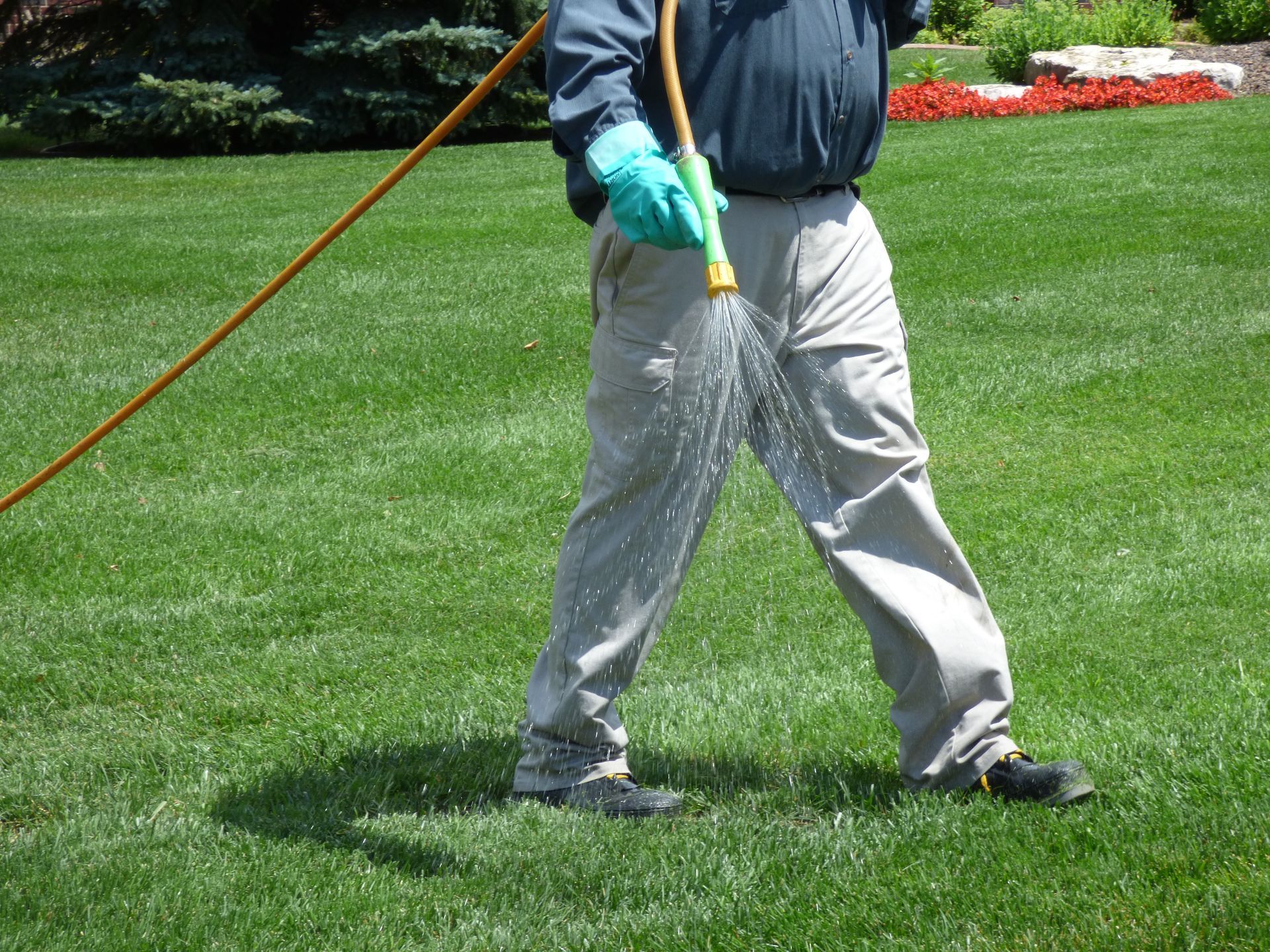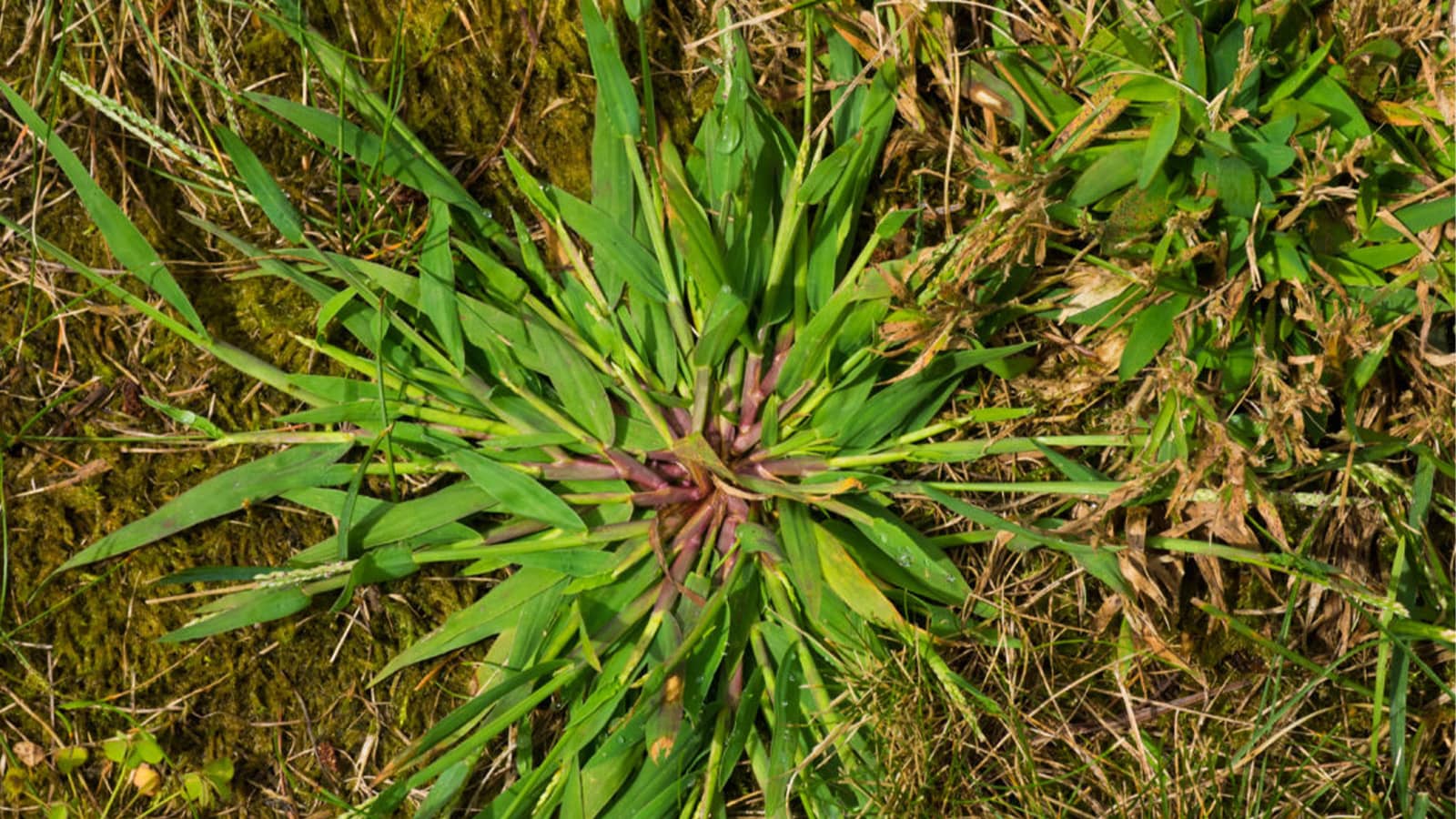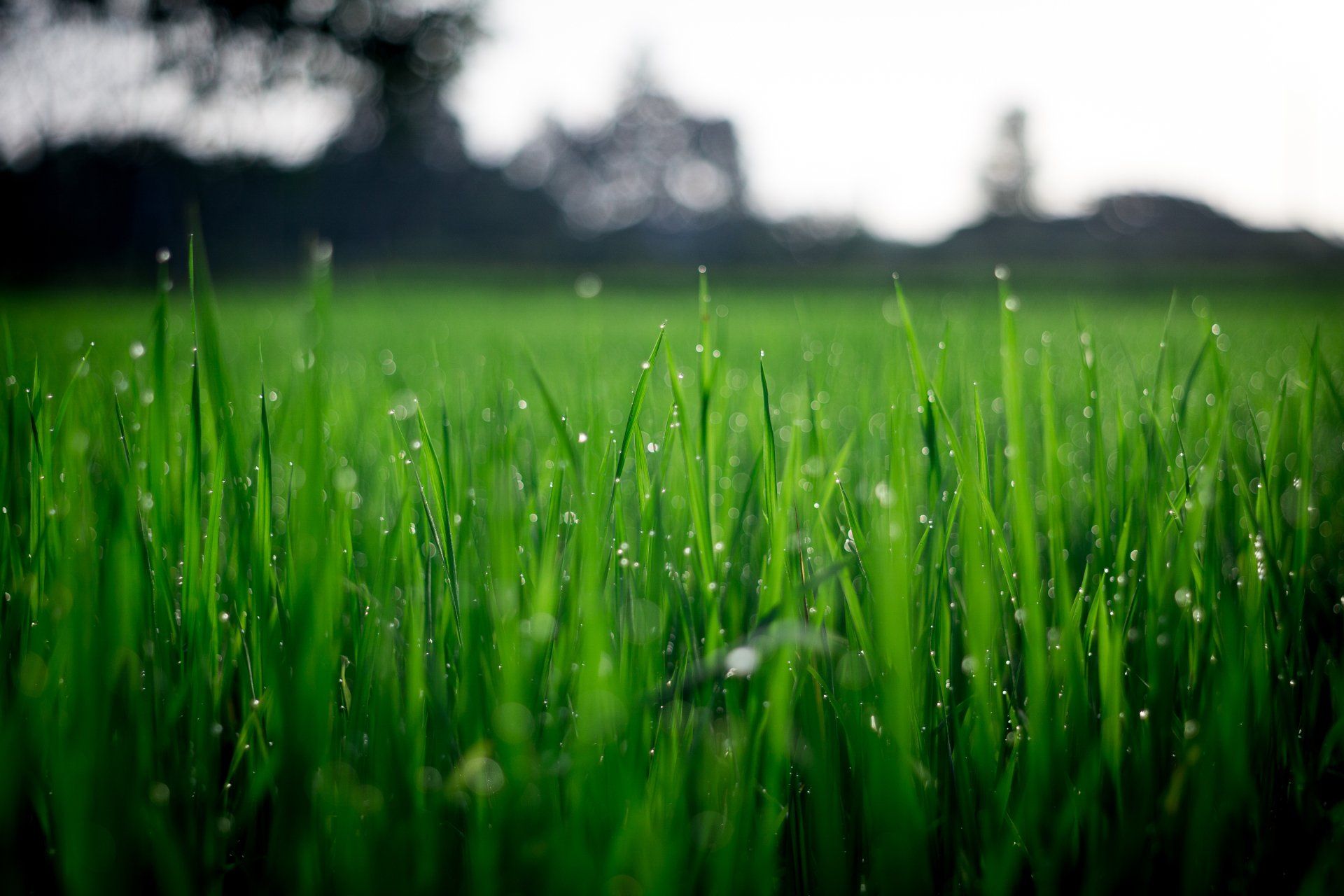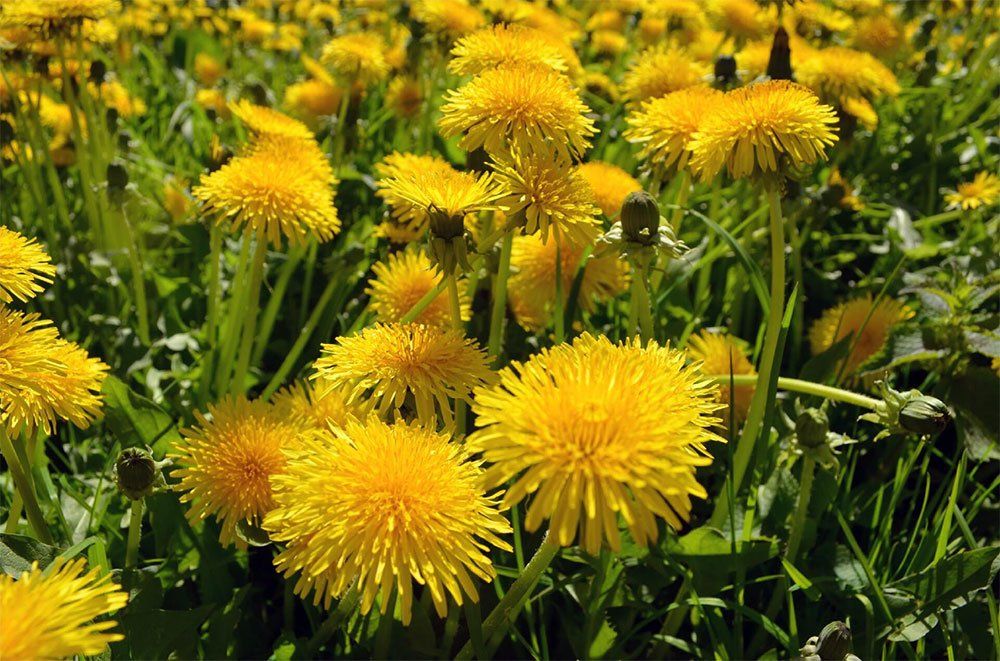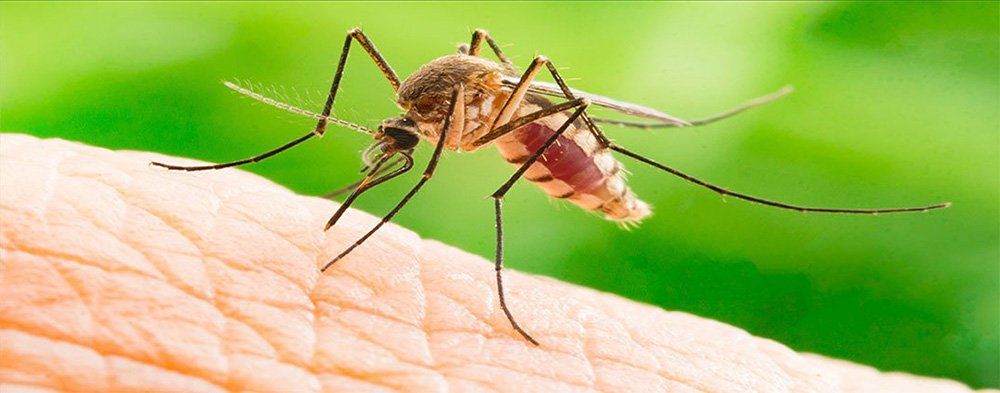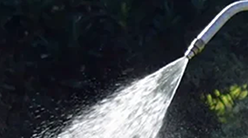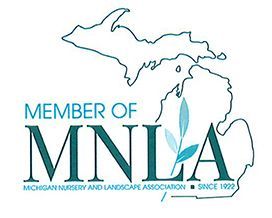Managing Snow Mold
Each year we look forward to the time when spring has sprung and it’s finally time to get outside and enjoy our yards again. Once the snow has melted, homeowners expect to see their lawns spring back to life, but here in Michigan the damage caused by snow mold can really put a damper on your lawn care plans. Below you’ll find tips for identifying and managing the two types of snow mold.
Snow Mold Symptoms
Every variety of cool season turfgrass grown in our region is susceptible to snow mold, with bentgrasses tending to show more damage than coarse grasses such as the fescues. While these molds can survive a variety of extreme temperatures and weather conditions, wet winters with snowfall on unfrozen ground create the perfect environment for infestation.
The first signs of the disease appear when temperatures are consistently around 40 degrees, showing up as wet, irregular circular patches of gray, pink, or white measuring from anywhere from an inch or two, to up to three feet in diameter. As the ground dries out, the patches turn brown, orange or black, and take on a matted appearance, with some spots growing together and merging into even larger patches.
Pink vs Gray Snow Mold
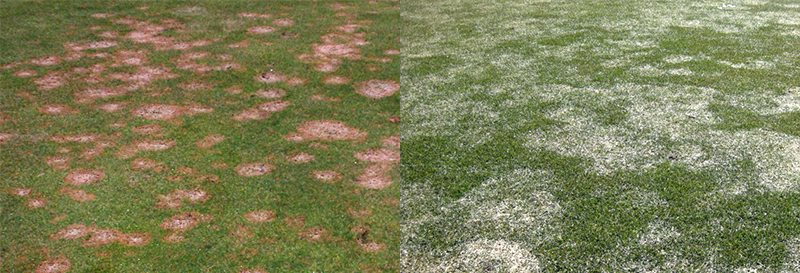
While both varieties of snow mold cause unsightly patches in your lawn, as well as triggering allergy symptoms in susceptible people, each is caused by a different fungus that results in different patterns of damage and requires its own targeted treatment strategy. Most commonly found in Michigan lawns is gray snow mold (Typhula blight, or snow scald). As the snow melts, roughly circular spots of varying sizes appear in affected lawns. The grass within the spots appears dead or matted, with grayish white fuzz either covering the entire patch or circling its borders. As time passes, the mold changes color, becoming dark gray or black. While gray snow mold does kill grass blades, grass roots remain largely unaffected, making it the easier of the two to treat.
Our second variety is pink snow mold, also known as fusarium patch or microdochium patch. In common with its gray cousin, pink snow mold appears in lawns as wet, matted spots as the snow melts. These spots often have more regular borders than those of gray snow mold, and sport pinkish fuzz early in the season. The infected areas eventually turn yellow, orange, or reddish as the soil begins to dry, and at this point may begin to expand in size. This variety is the more troublesome of the two because it kills grass roots as well as blades, so affected areas will need to be removed and reseeded.
Snow Mold Treatment
Once you’ve figured out which variety of snow mold is attacking your Michigan lawn you can decide on the best course of treatment.
If you find you’re dealing with gray snow mold, simply rake through affected areas to break up matting and improve air flow. Don’t be tempted to apply fungicides because once gray mold patches are visible the damage is already done and fungicides at this point can do more harm than good. Once the ground has warmed and dried, your grass may bounce back without further treatment, though scarring from the infestation can last until midsummer.
For pink snow mold, rake the dead grass away from the area, aerate, and reseed, since the roots of your grass have likely been affected. For areas that have been badly affected, resodding may be necessary. A spring application of fungicide may also be helpful, but only if you’ ve positively identified the area as having pink snow mold.
Snow Mold Prevention
An ounce of prevention is worth a pound of cure, so focus on forming good lawn maintenance habits that will decrease the likelihood of snow mold formation.
Proper drainage is key, so fill in low or depressed areas with topsoil. Likewise, thick thatch is an invitation to snow mold, so if you find your thatch is more than about a half inch thick, try using a power rake or vertical mower to reduce it. To promote good air circulation, consider pruning or removing any dense or overgrown shrubs bordering your lawn.
As winter approaches, cut your lawn one final time and be sure to bag the clippings to avoid leaving the ground damp enough to invite mold. This is also a good time to apply a preventive fungicide. If you’re following a fertilizer program, stop applying fertilizer at least six weeks before your first expected snow.
Above all, don’t allow leaf or snow piles to accumulate because trapping excess moisture for long periods creates the perfect conditions for snow mold . Rake and bag or compost leaves, and once snow arrives, shovel or blow snow into small banks, rather than large piles that won’t melt quickly.
Call Custom Lawn Care
When snow molds rear their ugly heads, Custom Personalized Lawn Care can help. Call our Michigan lawn care professionals at (800) 570-3313 or get a quote for aeration and other lawn maintenance services here.
Remember to subscribe to our blog for more lawn care tips and stay up to date on our latest promotions by following us on Facebook and Twitter.
